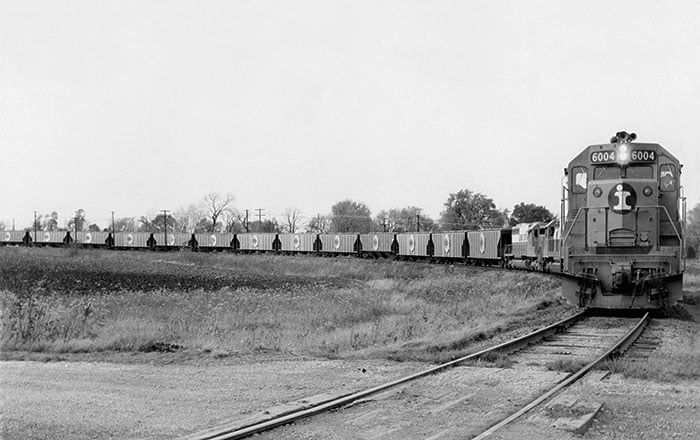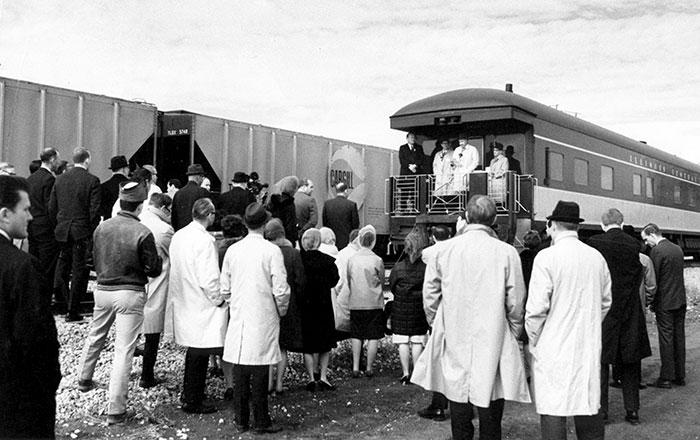Cargill's Great Unit Train Innovation
Given the chance to cut rail costs by 50% and help farmers get grain to market, Cargill attempted something never done before: obtaining enough grain to fill 115 rail cars.
January 01, 2015
In 1966, Illinois Central Railroad (ICR) sought a partner for an innovative idea. Instead of renting individual rail cars for grain transport, ICR wanted to rent out the whole train. Realizing that using “unit trains” would dramatically lower transport costs and open up farming and trading across the US, Cargill agreed to get on board. However, this meant that Cargill would need to gather an unheard-of amount of grain—enough to fill more than 100 cars—within a very short timeframe.
Never had an endeavor like this been attempted with grain. Logistics and tariffs had always made rail shipping cost prohibitive. Also, crops were only available in concentrated amounts and only for a few weeks at harvest time. Plus, if grain sat in storage too long, it could spoil. The challenge of gathering, storing and loading 100 rail cars of grain was considerable.
Cargill knew unit trains could decrease transport costs by up to 50%. But the company also realized the new transportation route would require a new type of inland export terminal. Until then, the company primarily relied upon the country’s waterways and rented individual rail cars for transportation.
Cargill appreciated the railroad complemented waterway routes while granting landlocked farmers new access to the global market. Seeing the dramatic potential to help more farmers get their grains to market more efficiently, Cargill accepted the unit car challenge.
To gather a grain shipment to fill more than 100 rail cars, Cargill developed new facilities and techniques. To increase capacity, the company built a string of new processing plants and storage facilities across the American Midwest. Cargill developed aeration equipment and dryers to store grain and keep it in prime condition well beyond harvest. Beyond this, Cargill invested in a new, 3.6 million-bushel export terminal out of Gibson City, Illinois.
At last, in the winter of 1967, the presidents of Cargill and ICR watched the first grain unit train pull away from the Gibson City station with 115 cars filled to the brim. Carrying 400,000 bushels of Illinois corn, the unit train headed for Cargill’s export terminal in Baton Rouge, Louisiana, planning to return to Gibson City in just five days.

[image caption] A Cargill unit train, featuring 115 cars that collectively carry 400,000 bushels of Illinois corn.

[image caption] Executives of Cargill and the Illinois Central Railroad gather to celebrate the unit train’s debut.
The journey had serious complications: under the weight of the fully-loaded train, a railway bridge failed, derailing 14 of the train’s cars. While the derailment was a setback, Cargill ultimately considered the venture a success. The company committed to a minimum of 56 round trips the following year, and delivered more than 22 million bushels of corn to Baton Rouge. Soon after, Cargill opened a second inland transport terminal in Tuscola, Illinois, and a third in Linden, Indiana.
The unit trains revolutionized the grain industry, and Cargill played an integral role. Over time, the establishment of new facilities and aeration equipment further extended train capacity and availability to meet year-round demand. Renting unit trains became the standard for transporting mass volumes and would drive major agricultural growth in the years to come.
